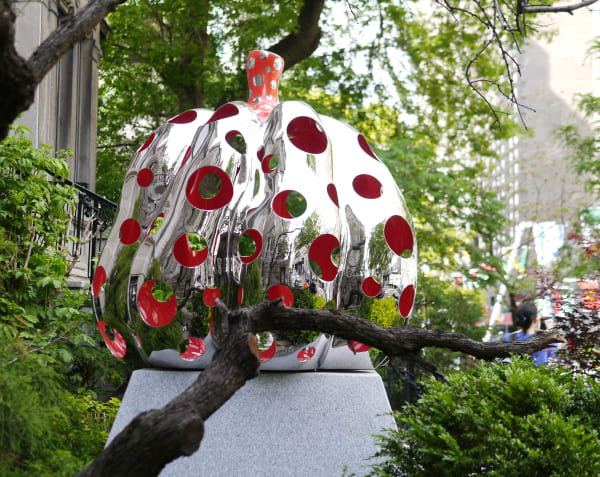-
 ©Album. Licensed under Alamy.
©Album. Licensed under Alamy. -
During the late 1960s, Kusama staged what she called “happenings” — experimental live art events that blurred the boundaries between art and audience. These included body-painting festivals, fashion shows, and anti-war demonstrations, designed to immerse participants in a shared experience of performance, protest, and art. They drew international attention and reinforced Kusama’s reputation as a fearless innovator.She also expanded into film, publishing and performance art, winning multiple awards for her experimental film Kusama’s Self-Obliteration (1968). By the early 1970s she had exhibited extensively across Europe and America, becoming a sought-after name in both galleries and critical circles. In 1973, Kusama returned to Japan, closing the first chapter of a career that had already secured her place as an internationally significant artist and market-driven figure in contemporary art.
-
LATER LIFE
1960s - Present -
 ©Jeremy Sutton-Hibbert / Alamy
©Jeremy Sutton-Hibbert / Alamy -
MOTIFS
From polka dots to Infinity Nets -
“Our earth is only one polka dot among a million stars in the cosmos. Polka dots are a way to infinity.”
– Yayoi Kusama
Yayoi Kusama’s practice is unified by a set of recurring motifs that have become inseparable from her artistic identity. Her polka dots, which first appeared in drawings during her childhood, symbolise infinity and the dissolution of the self into the cosmos. By repeating these dots endlessly across canvases, sculptures, clothing, and entire rooms, she sought to overwhelm the viewer and blur the line between individual and universe. -
The pumpkin is another central motif, one rooted in personal memory. As a child, Kusama found comfort in the shape, colour, and stability of pumpkins, describing them as “humorous” and “solid” companions. Over time, the pumpkin became both a playful emblem and a deeply personal symbol of resilience. From delicate prints and bold acrylic paintings to monumental outdoor sculptures, Kusama has reinterpreted this motif across decades of work, ensuring its place as one of her most recognisable signatures.Perhaps most famous are her Infinity Rooms, immersive mirrored installations that create an illusion of boundless space. By filling these chambers with lights, pumpkins, or reflections of dots, Kusama invites viewers to step inside her vision of endless repetition and eternal space. These installations combine her signature motifs into total environments that dissolve boundaries between art and life, making them among the most celebrated and sought-after experiences in contemporary art.
-
Prints and Multiples
Explore Kusama’s prints. -
Originals
Explore Kusama Originals




